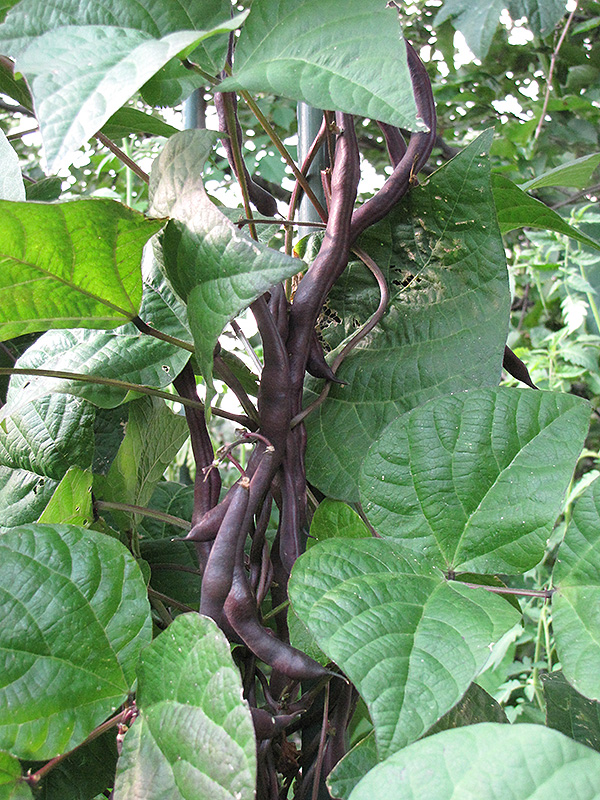Plant Finder
Trionfo Violetto Pole Bean
Phaseolus vulgaris 'Trionfo Violetto'
Height: 9 feet
Spacing: 12 inches
Sunlight:
![]()
Hardiness Zone: (annual)
Group/Class: Heirloom
Description:
A fast growing heirloom variety that produces heavy yields of meaty yet tender pods; 7 inch long deep purple beans with a wonderful crisp and nutty flavor; great for roasting, boiling, sautéing and used in salads; purple fades when cooked
Edible Qualities
Trionfo Violetto Pole Bean is an annual vegetable plant that is typically grown for its edible qualities. The entire above-ground parts of the plant are edible, and can be harvested at any time in the season. The edible parts have a delicious taste and a crisp texture.
The plant is most often used in the following ways:
- Fresh Eating
- Eating When Cooked/Prepared
- Cooking
- Baking
- Pickling
Planting & Growing
Trionfo Violetto Pole Bean will grow to be about 9 feet tall at maturity, with a spread of 18 inches. When planted in rows, individual plants should be spaced approximately 12 inches apart. Because of its vigorous growth habit, it may require staking or supplemental support. This fast-growing vegetable plant is an annual, which means that it will grow for one season in your garden and then die after producing a crop.
This plant is typically grown in a designated vegetable garden. It should only be grown in full sunlight. It does best in average conditions that are neither too wet nor too dry, and is very intolerant of standing water. It is not particular as to soil pH, but grows best in rich soils. It is quite intolerant of urban pollution, therefore inner city or urban streetside plantings are best avoided. Consider applying a thick mulch around the root zone over the growing season to conserve soil moisture. This is a selected variety of a species not originally from North America.
Trionfo Violetto Pole Bean is a good choice for the vegetable garden, but it is also well-suited for use in outdoor pots and containers. Its large size and upright habit of growth lend it for use as a solitary accent, or in a composition surrounded by smaller plants around the base and those that spill over the edges. It is even sizeable enough that it can be grown alone in a suitable container. Note that when growing plants in outdoor containers and baskets, they may require more frequent waterings than they would in the yard or garden.




